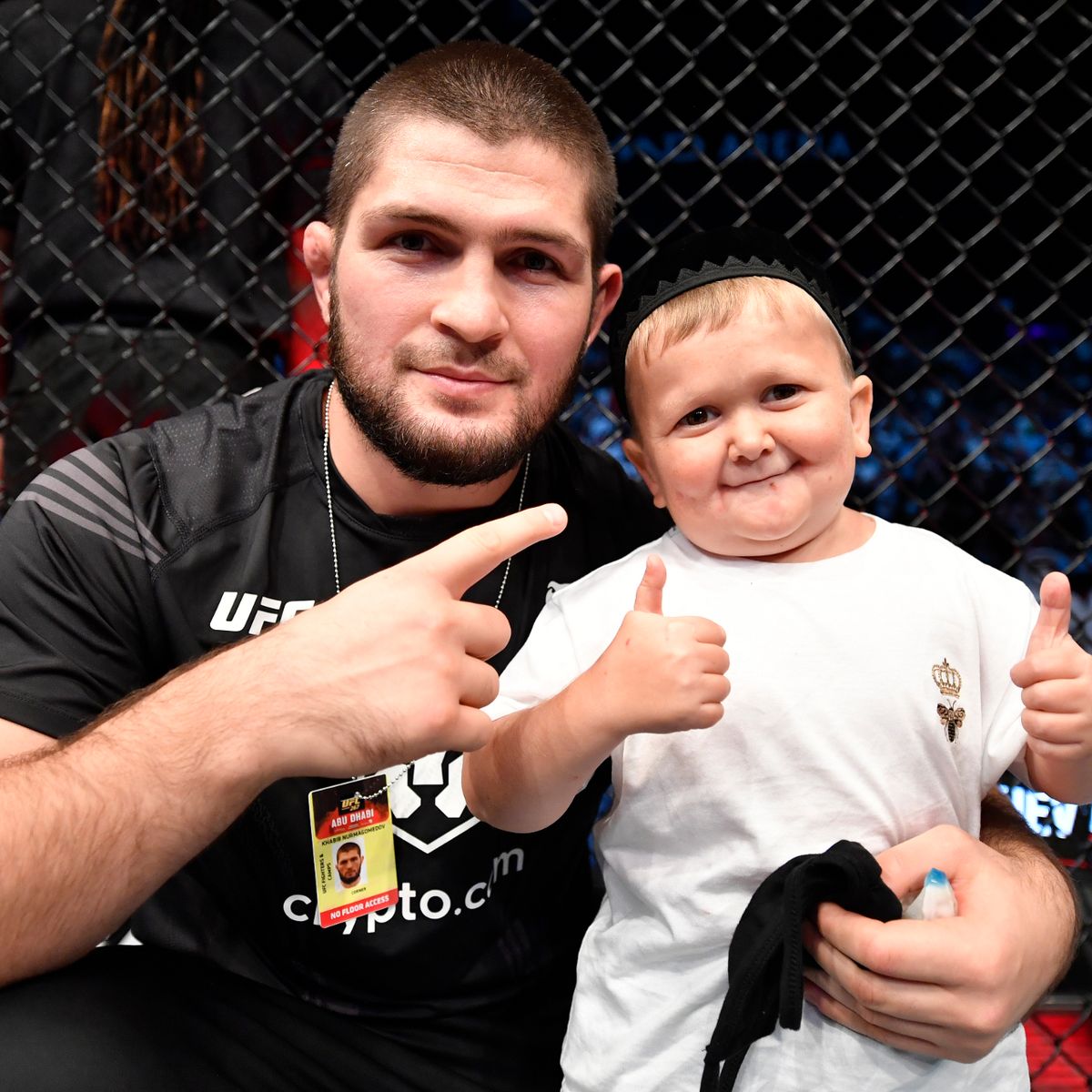Understanding Hasbulla Disease: The Condition Behind The Viral Sensation
In recent years, Hasbulla Magomedov has captured the hearts of millions worldwide, becoming a viral sensation on social media platforms. However, behind his popularity lies a medical condition known as "Hasbulla disease," which has sparked curiosity and concern among many. This article aims to delve deeper into Hasbulla's life, the nature of this condition, and its implications on his well-being.
Hasbulla, often referred to as "Mini Khabib," due to his close association with UFC fighter Khabib Nurmagomedov, is not just a social media personality; he represents a unique case of a genetic condition that affects his appearance and growth. While his charming demeanor and infectious personality have made him an internet icon, it’s essential to understand the health challenges he faces due to Hasbulla disease.
As we explore the intricacies of Hasbulla disease, we will also provide insights into how this condition affects individuals in similar situations. Awareness and education are crucial in fostering understanding and empathy towards those with rare medical conditions, and Hasbulla's journey serves as an important reminder of resilience in the face of adversity.
Who is Hasbulla Magomedov?
Hasbulla Magomedov is a young social media influencer from Dagestan, Russia. He gained fame through various viral videos showcasing his playful personality, often engaging in humorous skits and interactions with other internet personalities. Born in 2003, Hasbulla has become a beloved figure in the online community, especially among MMA fans, due to his connection with Khabib Nurmagomedov.
What is Hasbulla Disease?
Hasbulla disease refers to a condition known as Achondroplasia, a form of dwarfism characterized by short stature and disproportionate body features. This genetic disorder results from a mutation in the FGFR3 gene, which is responsible for regulating bone growth. Individuals with this condition often have a normal-sized torso but shorter limbs and a larger head, which is prominently seen in Hasbulla.
What are the Symptoms of Hasbulla Disease?
People affected by Hasbulla disease may experience a range of symptoms, including:
- Short stature
- Disproportionately short arms and legs
- Larger head size compared to body
- Delayed motor skills
- Possible spinal issues
How Does Hasbulla Disease Affect Daily Life?
Living with Hasbulla disease, or Achondroplasia, can present unique challenges. Activities that may seem mundane to others can require more effort and adaptations for individuals with this condition. Mobility issues, the need for specialized furniture, and accessibility challenges are common considerations in their daily lives.
Is There a Cure for Hasbulla Disease?
Currently, there is no cure for Hasbulla disease. However, various treatments and therapies can help manage symptoms and improve quality of life. These may include:
- Physical therapy to enhance mobility
- Occupational therapy for daily living skills
- Regular check-ups to monitor health
What Can Society Do to Support Individuals with Hasbulla Disease?
Awareness and acceptance are key to supporting individuals with Hasbulla disease. Society can play a significant role through:
- Educating the public about dwarfism and related conditions
- Promoting inclusivity in various settings, including schools and workplaces
- Encouraging positive portrayals in media and entertainment
What is Hasbulla's Personal Life Like?
While Hasbulla is known for his online presence, little is known about his personal life beyond the screens. He enjoys engaging with his fans and often shares snippets of his life through social media. His charisma and charm have made him a beloved figure, transcending his medical condition.
| Detail | Information |
|---|---|
| Name | Hasbulla Magomedov |
| Birth Year | 2003 |
| Nationality | Russian |
| Condition | Achondroplasia (Hasbulla disease) |
| Famous For | Social media influence and connection to Khabib Nurmagomedov |
How Can We Raise Awareness About Hasbulla Disease?
Raising awareness about Hasbulla disease can help destigmatize dwarfism and promote understanding. Some effective ways to raise awareness include:
- Sharing educational content on social media platforms
- Participating in or organizing events that celebrate diversity
- Collaborating with advocacy groups focused on disabilities
What is the Future for Individuals with Hasbulla Disease?
The future for individuals with Hasbulla disease is filled with potential. As society becomes more inclusive and aware of diverse needs, individuals like Hasbulla can thrive in various aspects of life. With continued support, education, and acceptance, they can lead fulfilling lives and inspire others along the way.
In conclusion, Hasbulla disease is more than just a label; it’s a journey that many individuals navigate with strength and resilience. By understanding this condition and supporting those affected, we can create a more inclusive and compassionate world for everyone.
```
Discovering The B-67 TV Tower: A Marvel Of Engineering
Exploring The Mystique Of The July 14 Cusp: A Fusion Of Astrological Influences
Unraveling The Mystery Of Antony Starr's Girlfriend


